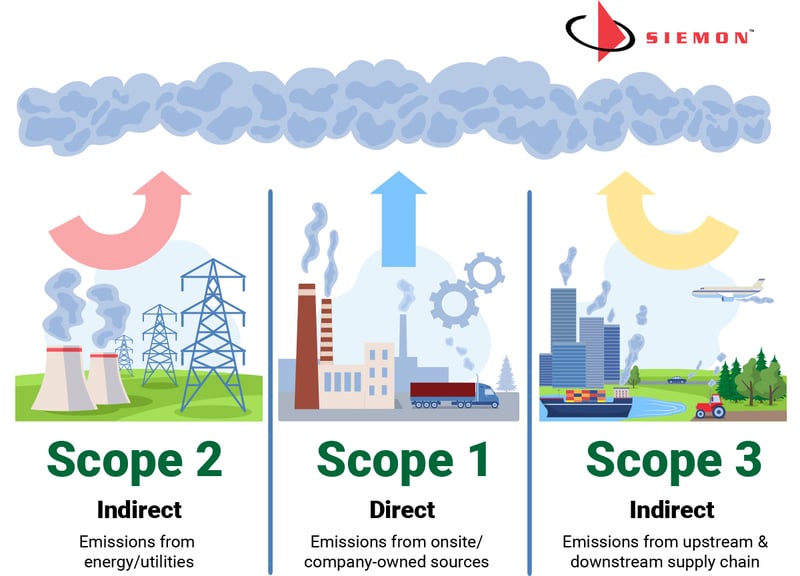This blog overviews an article by Siemon, "Deciphering Greenhouse Gas Scopes," published this year as a response to corporate carbon neutrality goals. You can now download and review their announced commitment to Net-Zero Emission Reduction here.
Understanding the Push Towards Carbon Emissions Reduction
Reducing carbon emissions has been on the top of everyone's minds. How can we, as a human race, limit our impact on climate change? What does the evolving language of emission reduction metrics mean, and how can businesses digest those measurements in order to make a true difference?
This year, several Accu-Tech manufacturing partners have announced their sustainability initiatives, yet the exact details of everyone's plan may feel overwhelming or confusing at first. What do their metrics mean, and how do they account for them?
Siemon does us a favor by breaking down such initiatives, and draws our attention back to the Greenhouse Gas Protocol, more commonly referred to as the GHG Protocol.
According to Duval's explanation, this Protocol began in the late 1990s, when the World Resources Institute and the World Business Council for Sustainable Development standardized the accounting and reporting processes of corporate greenhouse gas usage.
Today, those same standardizations have transformed into categories referred to as "Scopes," with which businesses can better understand the specific function and impact of their operation.
Scope 1: Direct Emissions From Onsite / Company-Owned Sources
Generated directly by activities taking place at company owned or controlled locations, these emissions look like:
-
The use of fossil fuels for heating
-
The escape of industrial fumes in manufacturing processes
-
Company-owned fleet vehicles
Scope 2: Indirect Emissions From Energy / Utilities
Representing more than a third of all global CO2 emissions, Scope 2 emissions are best understood as:
-
Purchased energy
-
The use of electricity
Scope 3: Indirect Emissions From Upstream / Downstream Supply Chain
Beyond the direct control of the reporting company, Scope 3 emissions take into account the entire upstream and downstream value chain. This means including any emissions that result from:
-
Upstream extraction, production, and transport of the raw materials, components, and capital equipment a company purchases to “make” a product or service
-
Downstream emissions resulting from the transport, storage, lifetime energy use, and end-of-life processing of a product
The Next Step
After considering these categories of information, the idea of quantifying emissions becomes more clear of a task. Siemon exemplifies that, if a company wants to track their emissions at the Scope 3 level, they are committing to an enormous drive to sustainability, involving their entire value chain.
In the short term, if you or your company is interested in doing this important work, it's recommended that you start with your suppliers and partners. Ask about their carbon accounting efforts, and whether or not they are reporting them at all.
"If they’re reporting to Scope 1 and Scope 2, give them a pat on the back and tell them to keep up the good work. If they’re extending their boundaries to Scope 3, understand that they are truly devoted to building a more sustainable world."
In the long term, your company can plan how to answer the same question in return. Do you measure your carbon footprint? If so, how?






.png?width=58&height=58&name=X_logo_2023_(white).png)
